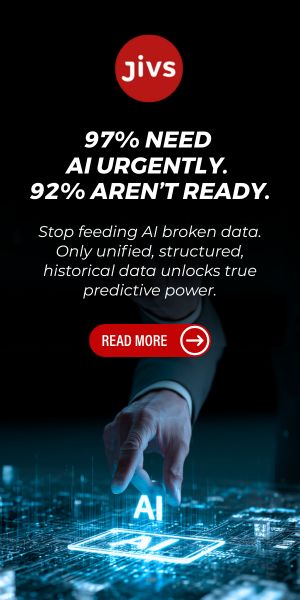 From the Country Music Hall of Fame to factory floors, IFS Connect 2025 revealed the hard truths about generative AI ROI.
From the Country Music Hall of Fame to factory floors, IFS Connect 2025 revealed the hard truths about generative AI ROI.
The buzz was palpable at Nashville’s Country Music Hall of Fame during IFS Connect North America 2025. But unlike most AI conferences drowning in theoretical possibilities, this gathering of industrial leaders focused on a refreshingly practical question: where’s the money?
Nick van der Meulen, Research Scientist at MIT Sloan Center for Information Systems Research (CISR), delivered some uncomfortable truths that many executives needed to hear. After a year and a half of investigation into generative AI implementations, they found that organizations struggling to find ROI were focusing on the wrong applications entirely.
The Tale of Two AIs
The keynote revelation was deceptively simple yet profound: there are actually two distinct types of generative AI implementations, and most companies are betting on the wrong horse.
First, there are generative AI tools – the familiar consumer-grade chatbots like ChatGPT, Claude, and Microsoft Copilot that everyone’s been experimenting with. These focus on individual productivity gains, saving “10 minutes here, 30 there,” but struggle to translate into measurable business value. As the MIT researcher put it, they create “productivity shades” rather than strategic impact.
Then there are generative AI solutions – purpose-built, strategically designed applications integrated with organizational data and systems to deliver on specific business objectives. This is where the real money lives.
The difference becomes crystal clear with a real-world example: imagine a factory compressor running off-spec at 2 AM. Instead of frantically searching through PDFs and calling off-duty experts, a maintenance worker can now ask an AI copilot integrated with sensor data, maintenance history, and OEM specifications: “What’s happening?” The system responds with probable causes, exact torque specifications (450 Newton meters), step-by-step procedures, and safety checklists.
That’s not a productivity tool – that’s a strategic solution delivering measurable business value through reduced downtime, faster resolution times, and improved safety outcomes.
The “Bring Your Own AI” Reality Check
Here’s where things get interesting. Whether organizations like it or not, employees are already using AI tools. MIT researchers coined this phenomenon “bring your own AI” – a blessing and a massive risk rolled into one.
The blessing? Widespread familiarity that accelerates organizational adoption. The risk? Sensitive company data potentially uploaded to public-facing models that might use it for training, creating nightmare scenarios for compliance and competitive intelligence.
The answer isn’t prohibition – it’s governance through enablement. Global animal health organization Zoetis cracked this code with their “generative AI App Store” approach. Employees request licenses for specific AI tools by explaining their use cases and commit to sharing results over time. This creates both safety guardrails and valuable user stories that demonstrate practical applications across the organization.
But here’s the strategic insight: these controlled experiments with tools often generate the breakthrough ideas for lucrative solutions. It’s a pathway, not a destination.
The Strategic Prioritization Imperative
Real-time survey data from the Nashville audience revealed the current state of AI strategy: 30% are exploring strategic fit, 30% aren’t developing solutions at all, 21% have weak strategic links, 14% are guided by strategic objectives, and only 4% consider AI integral to their strategy.
This scatter-shot approach leads to what researchers aptly termed “pilotitis” – lots of small-scale experimentation driven by technology excitement rather than business impact. Some call it “POC purgatory.”
The antidote requires venture capital-style discipline. Organizations succeeding with AI solutions establish senior leadership-endorsed priority use cases (typically seven high-impact areas), create clear business cases with specific exit criteria, and apply strict funding gates based on measurable KPIs.
Kaiser Permanente exemplifies this approach with their physician visit transcription solution. After tracking results for over a year, they documented improved physician efficiency, enhanced employee experience, and better patient interactions as doctors no longer need to type while talking. It’s measurable, scalable, and directly tied to strategic objectives.
The Buy, Boost, or Build Framework
The path to AI solutions follows three increasingly complex approaches:
- Buy: Off-the-shelf solutions like Kaiser Permanente’s transcription tool. Lower barrier to entry but limited customization.
- Boost: Vendor models enhanced with proprietary organizational data. This middle path offers customization while leveraging proven foundation models, though variable costs increase due to larger token usage.
- Build: Custom solutions using open-source or open-weights models fine-tuned for specific organizational conditions. Maximum competitive advantage potential but highest resource requirements and ongoing maintenance obligations.
Regardless of approach, success demands what van der Meulen calls “advanced data monetization capabilities” – five critical organizational competencies that only 26% of executives believe their organizations possess comprehensively.
These include excellent data management (rich, accessible, well-governed data), modern cloud-enabled data platforms, ethical use frameworks, deep customer understanding for co-creation, and in-house data science capabilities. The last point is crucial – organizations cannot afford to outsource understanding of technologies becoming integral to their competitive advantage.
With median large organizations running 30 AI models in production and top quartile companies exceeding 100 models, vendor relationships become strategically critical. Foundation models and embedding technologies evolve rapidly, making transactional “set it and forget it” approaches obsolete.
Strategic vendor partnerships provide roadmap visibility, mutual success planning, and adaptation capabilities as AI capabilities advance. This becomes particularly important as AI solutions become mission-critical infrastructure rather than experimental add-ons.
The Industrial AI Reality
IFS’s recent financial results underscore this trend, with 30% year-over-year quarterly growth driven by rising demand for Industrial AI, reaching €1 billion in ARR and a €15 billion valuation. Their IFS.ai platform exemplifies the solutions approach, integrating AI capabilities directly into ERP, EAM, and field service management workflows rather than offering standalone tools.
The message from Nashville was clear: the AI revolution in industrial contexts isn’t about replacing human intelligence – it’s about augmenting human expertise with contextual, integrated, purpose-built solutions that deliver measurable business outcomes.
Organizations that continue treating AI as a technology exploration rather than a strategic capability risk being left behind by competitors who’ve moved beyond experimentation to systematic value realization.
What this means for ERP Insiders
Implement governed AI experimentation platforms. Tech leaders should establish controlled environments for employee AI experimentation, similar to Zoetis’s App Store model. With IFS reporting 30% year-over-year growth driven by Industrial AI demand, organizations need systematic approaches to identify solution opportunities. Create internal AI sandboxes with usage tracking, outcome reporting, and clear data governance policies. IFS’s AI readiness assessment can help evaluate current capabilities while their Co-pilot functionality provides integrated AI within existing ERP workflows, ensuring experimentation leads to strategic solutions rather than scattered tool adoption.
Prioritize AI solutions over productivity tools. Focus investment on strategic AI solutions integrated with organizational data rather than general productivity tools. MIT research shows the median large organization runs 30 AI models in production, with top quartile companies exceeding 100. Develop venture capital-style funding approaches with clear KPI gates and exit criteria. IFS.ai’s embedded AI capabilities within manufacturing ERP, asset management, and field service modules provide ready-to-deploy solutions targeting specific business processes. This approach delivers measurable ROI through reduced downtime, improved safety, and enhanced operational efficiency rather than diffuse productivity gains.
Build advanced data monetization capabilities. Invest in the five critical data monetization capabilities identified by MIT research, particularly data science expertise that only 26% of executives believe their organizations possess comprehensively. Partner strategically with vendors like IFS who provide both technology platforms and implementation expertise. IFS Cloud’s integrated approach combines ERP, EAM, and field service management with embedded AI, reducing the complexity of building separate AI infrastructures. Their Industrial AI focus on manufacturing, utilities, and service industries provides industry-specific solutions that leverage deep domain expertise, accelerating time-to-value while building internal capabilities.






